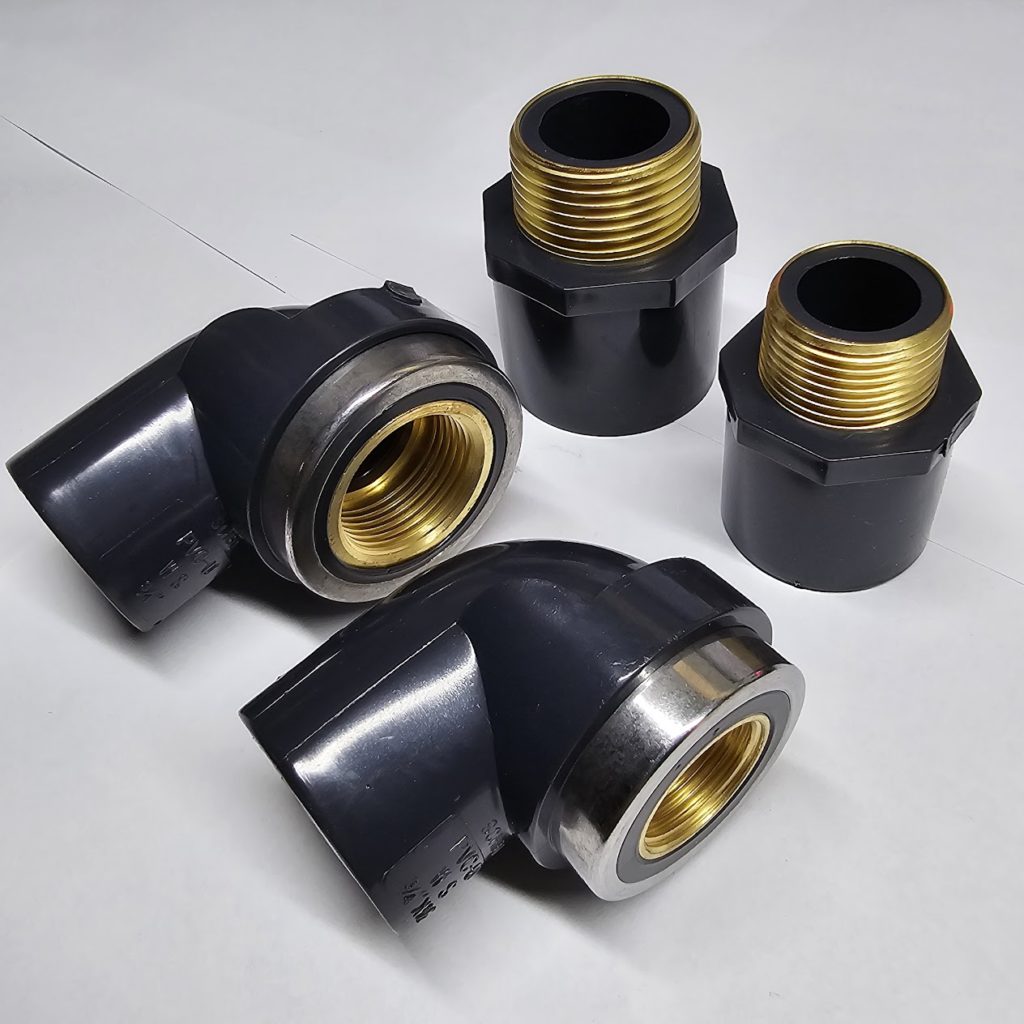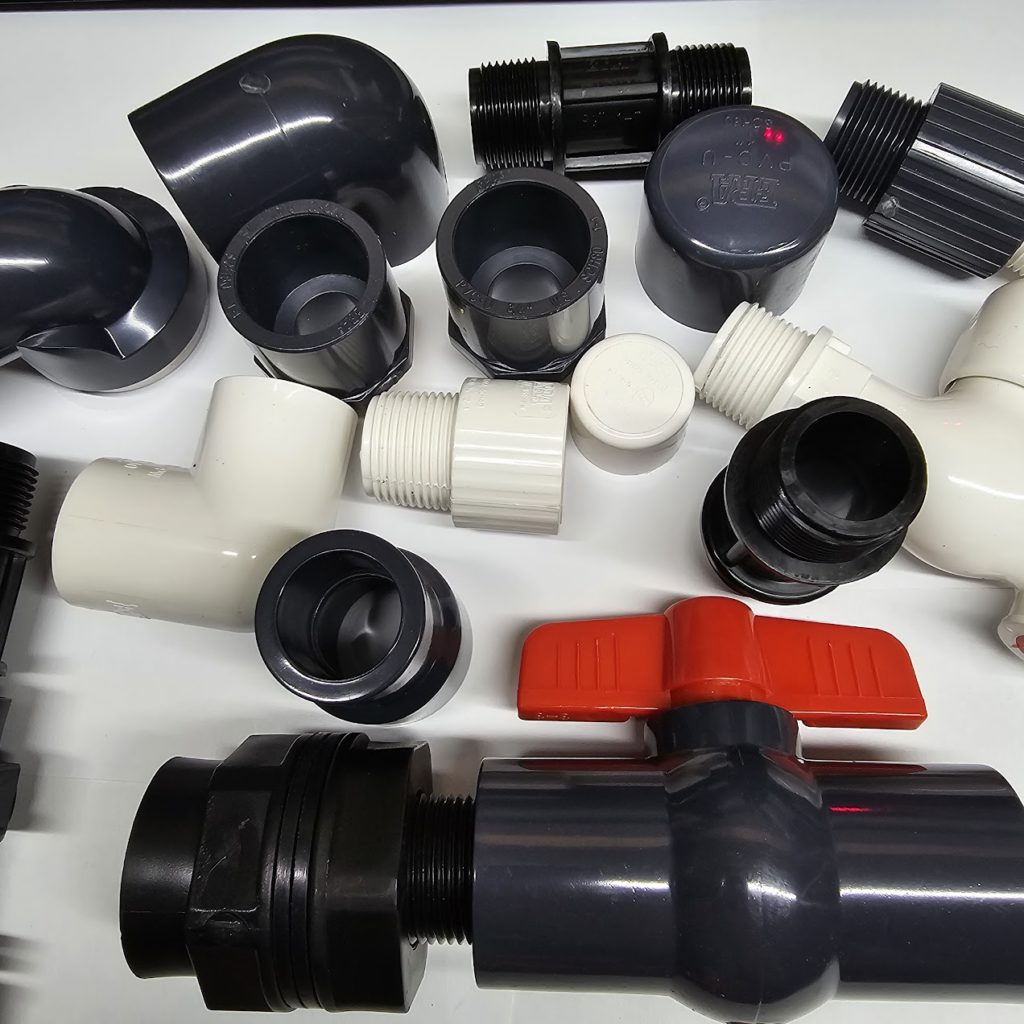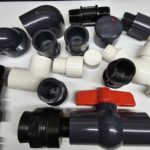When it comes to choosing between metal and plastic PVC fittings for plumbing, each material has its own set of advantages and disadvantages. Here’s a breakdown of the pros and cons to help guide the decision-making process:

Metal Fittings
Pros:
- Durability: Metal fittings, such as brass or stainless steel, are highly durable and resistant to physical damage. They can withstand higher pressures and temperatures compared to plastic fittings.
- Corrosion Resistance: Many metal fittings are resistant to corrosion, particularly brass, which doesn’t rust and is ideal for water applications.
- Strength: Metal fittings are stronger and less likely to crack or break under stress, making them suitable for high-pressure systems.
- Thread Integrity: Metal threads maintain their shape better over time, reducing the likelihood of leaks.
Cons:
- Cost: Metal fittings tend to be more expensive than plastic ones, both in terms of initial purchase and potential installation costs.
- Weight: Metal fittings are heavier, which can make them more challenging to handle during installation and may require more robust support.
- Corrosion in Some Conditions: While some metals resist corrosion, others, like iron or steel, can rust if not properly treated, especially in certain water conditions.
- Electrolytic Corrosion: Metal fittings can suffer from electrolytic corrosion when different metals are used together in a plumbing system, which can lead to system failure.
Plastic (PVC) Fittings

Pros:
- Cost-Effective: Plastic PVC fittings are generally more affordable than metal fittings, making them a popular choice for budget-conscious projects.
- Corrosion Resistance: Unlike metal, PVC is immune to corrosion and rust, making it ideal for water and chemical applications.
- Lightweight: PVC fittings are lightweight, making them easier to transport and install, especially in large or complex systems.
- Chemical Resistance: PVC fittings are resistant to a wide range of chemicals, making them suitable for applications involving aggressive substances.
Cons:
- Lower Strength: PVC fittings are not as strong as metal and can be prone to cracking under high pressure or impact.
- Temperature Limitations: PVC has a lower melting point and can deform or fail at high temperatures, limiting its use in hot water systems.
- UV Sensitivity: Prolonged exposure to sunlight can cause PVC to degrade, which can lead to brittleness and potential failure.
- Limited Thread Integrity: Plastic threads are more susceptible to wear and can strip more easily than metal threads, which may result in leaks over time.
Conclusion
The choice between metal and plastic PVC fittings depends on the specific requirements of the plumbing system. For high-pressure, high-temperature, or outdoor applications, metal fittings may be the better option. However, for cost-effective, corrosion-resistant solutions, plastic PVC fittings are a strong contender. The decision should be guided by factors like budget, environmental conditions, and the nature of the fluid being transported.

